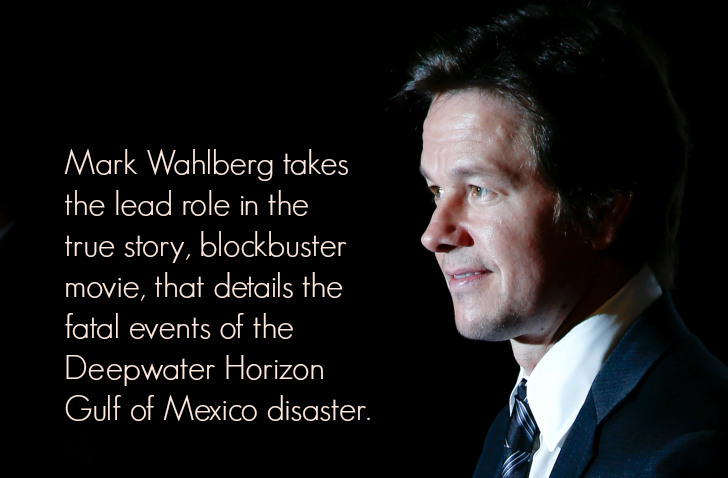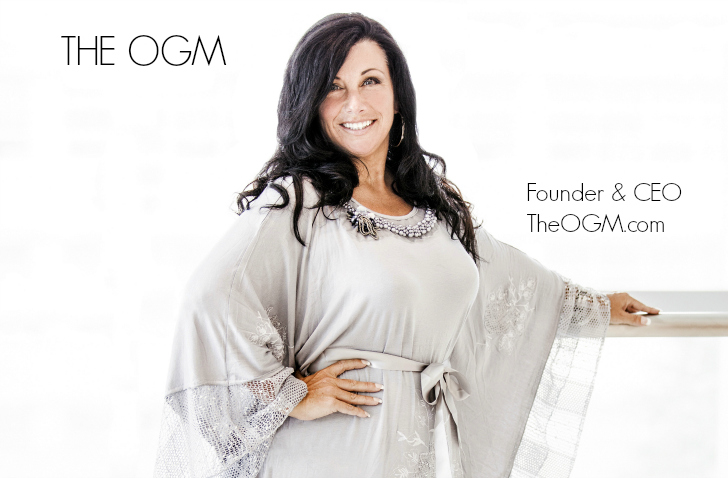The OGM Interactive Edition - Summer 2023 - Read Now!
View Past IssuesThe Deepwater Horizon drilling rig was like a floating hotel. The deck of the rig was nearly as big as a football field. It encased a 25-story derrick. Below the deck, two more floors accommodated nearly 150 people. Each room – a home away from home – had its own bathroom and satellite television, and housekeepers cleaned rooms and did laundry. The rig was even equipped with a gym, a sauna, and a movie theatre.
In the dead of night, the unthinkable happened. The floating hotel had a blowout and an explosion that was never expected nor predicted. And then two days later, the great castle in the sea sank.
The Deepwater Horizon oil drilling rig was an ultra-deepwater, dynamically positioned, semisubmersible built and designed to reach the deepest water depths of all time. Staffed with some of the greatest drillers on Earth, the Deepwater Horizon broke world drilling records. On September 2009, the rig drilled the deepest oil well in history at a vertical depth of 35,050 ft. – an incredible engineering feat that required the smartest minds in the world to execute.
Owned by Transocean and leased to British Petroleum (BP), this nearly 400-foot-long rig was designed to have defences against the worst conditions, including a blowout. Safety on the rig was paramount – it was equipped with every safety measure imaginable and rig workers were highly trained. They fully understood that, above all, safety comes first. And still it happened.
April 20 marks the 6-year anniversary of the world’s largest man-made disaster in the Gulf of Mexico. It stole the lives of 11 men, and 17 people were seriously injured. Two days later it sank and became the world’s deadliest environmental mess.

Mark Wahlberg
Thousands of oil and gas wells are drilled, and there are about 850 offshore drilling rigs operating around the globe. Most rigs drill into “high-pressure” zones of hydrocarbons, and yet almost no blow-outs or explosions occur during drilling operations. However, while the probability is slim, like the “perfect storm it can still happen, and it did.
During exploration and production, oil and gas are drilled from sealed-in rock formations deep under the Earth’s surface, and they are often under pressurized systems formed over millions of years. The combination of the rock squeezing or compressing the fluids and the Earth’s gravitational pressures means the majority of the fluid or gases being sought after by oil drillers is under extreme pressure.
Engineers have fine-tuned the drilling process so that safe extraction of hydrocarbons from pressurized formations can take place. An underwater blowout happens when an uncontrolled flow of gas, oil, or other well fluid escapes between the sea floor and the water surface. A blowout occurs when formation pressure exceeds the pressure applied to it by the column of drilling or other fluids in the well bore. That’s a simplified definition, and there is an entire science behind deep water drilling.
Here’s a video that explains the entire blowout of the Deepwater Horizon
Given that blowouts happen and the risk is especially high in deep water oil drilling, offshore rigs are highly regulated and inspected. Every precaution is designed into the rig infrastructure, methods, and systems to mitigate the risk of a blowout. Oil companies often go above and beyond standard regulations to ensure the safety of their teams. It is without a doubt their number one priority.
The Deepwater Horizon had devices installed to seal off a well blowout or, if necessary, to break free from it. It had systems to prevent gas from exploding and sophisticated alarms that would quickly warn the crew at the slightest trace of gas. Gas detection is a fundamental component of safety training, and systems are put in place to signal even the slightest leaks. The crew of the Deepwater Horizon routinely practiced responding to alarms and the possibility of fires and blowouts, and they employed well thought out safety videos that drilled the safety message into the hearts and minds of everyone onboard.
The safety culture on the Horizon was second to none. Before every job, no matter how routine, crew members were required to write out a plan identifying potential hazards that they may have noted. Despite long hours and harsh conditions, injuries were remarkably rare at BP, and the crew’s safety performance was often praised and recognized.
Oil and gas experts and investigators into the incident agreed that the Deepwater Horizon should have weathered this blowout. So the real question remained: how did this accident go against all the odds?
The answer lies in failed drilling systems during a heightened emergency. As it so often does, mechanical error and human error are at the heart of this tragedy, and as a result the unthinkable still happened. What emerges is the jarring reality that crew members died and suffered terrible injuries because every one of the Horizon’s pre-designed safety mechanisms failed on that fateful night.
Here’s how it happened. The BOP (Blow Out Preventer) failed to work. Mud gushed out of the well and onto the drilling floor. Then it gushed and sprayed up inside the drilling derrick. Mud and water sprayed in all directions, soaking the derrick hands from head to toe. Flammable oil and gas entered the well bore undetected. It travelled up the Horizon and drilling mud blew out onto the rig. Workers tried to seal the well but it tragically didn’t work. Oil and gas escaped into the rig and flowed from the reservoir below. Gas sensors went off but they failed to trip the emergency systems that would prevent gas from spreading or igniting or signalling the evacuation alarm. Then the lights went out and the leaked gas caused the massive explosion and inflamed the derrick.
The explosion hit like a bomb, melted the rig’s interior, shattered everything in its deadly path, and woke the sleeping crew in the still of the night. Crew members were hit by flying metal, whirling objects and a mass exodus of flames, smoke, and utter chaos.
Imagine yourself there. Pitch dark. Smoke everywhere after a massive explosion. People shocked, dazed, disoriented and bewildered. What would you do?
One complication after another triggered the series of events that prevented the well from being sealed. A buckled drill pipe prevented the blind shear ram from sealing the well. Oil and gas flowed out of the buckled drill pipe and into the Gulf of Mexico, causing the worst ever environmental suicide in history.
Gas leaks and gas-covered people could ignite at any moment. Some survivors were lucky enough to reach the lifeboat deck only to find the lifeboats filled with smoke and steaming hot. This was something never predicted or expected by the lifeboat manufacturers. Others jumped 60 feet to the water below.
Miraculously, more than 110 people escaped the rig. In a scene best described as nothing short of hell, people overcame the odds, they reached out to each other, and they helped each other.
The tragic and shocking events of the Deepwater Horizon story have echoed across the globe. It has left the loved ones of those lost searching for answers and the keenest minds scrambling to solve the mysteries of that disastrous night. Oil companies, rig owners, and industry experts are frantic and determined to get answers so that it never happens again.
The tragic events then led to another unlikely set of events. A massive amount of gas leaked from the wellhead, 5,000 feet below the surface. An estimated 4.9 million barrels of oil was discharged from that wellhead during the 5 long months it took to seal it. The world has never seen a disaster of this magnitude and hopefully never will again.
The shocking and almost impossible story has made it to the big screen. Lion’s Gate movie production house is producing the first IMAX recollection of the April 20th Deepwater Horizon events.
Filmed in Louisiana, the story is set on the Deepwater Horizon platform and depicts the event based on a New York Times article called the Deepwater Horizon’s Final Hours written by David Barstrow, David Rohde, and Stephanie Saul, and it’s directed by Peter Berg from a screenplay by Matthew Michael Carnahan and Matthew Sand.
The Deepwater Horizon cast includes an impressive lineup of Hollywood notables such as Mark Wahlberg, Dylan O’Brien, Gina Rodrigues, Kate Hudson, John Malkovich, and Kurt Russell. The Official Movie Trailer is now available and the movie comes out September 2016.
The shocking and true account of the hour-by-hour events of that night will be revealed. The story will be shared with the world and perhaps we will all be elevated to an entirely new level of awareness and caution. An awareness that ensures that we predict the impossible long before it could happen.
It is our responsibility, every one of us, to be informed, to be safety minded and to keep our oil and gas industry people safe. It’s not just the job of government regulators, oil companies or oil contractors. If you drive a car, use plastic, or sit at a computer, it’s you. You the consumer of energy who is also responsible.
Worker safety goes far beyond blame and pointing fingers at oil companies. It is the responsibility of all. It is a new energy safety mindset that will set new standards and design a culture that will sustain us. This culture must be one that permeates the oil and gas suppliers, the systems integrators, the technological innovators, the manufacturers, the software developers, the sub-contractors, the support companies, the energy communities, the families and the rig workers and every person who consumes energy.
Our oil and gas people should have the freedom to work with ease and safety. That will take a cultural shift in the entire mindset of every person working in and using oil and gas. This movie should be another step forward in ensuring that “energy” is everyone’s business and every person has the right to be safe and make it home.
It’s not only the job of the government regulators, the oil companies, and the contractors to keep people safe and the environment pristine. If you drive a car, take a bus, use plastic, watch TV, use a computer, wear clothes then you are a consumer of petroleum, and you have a responsibility too. Be informed. Take right action in every possible way that you can.
_____________________________________________________________________

Tina Olivero
Fill out this request and I will give you a free consult on achieving your business development goals with strategic content and effective marketing, in The OGM!
Did you enjoy this article?